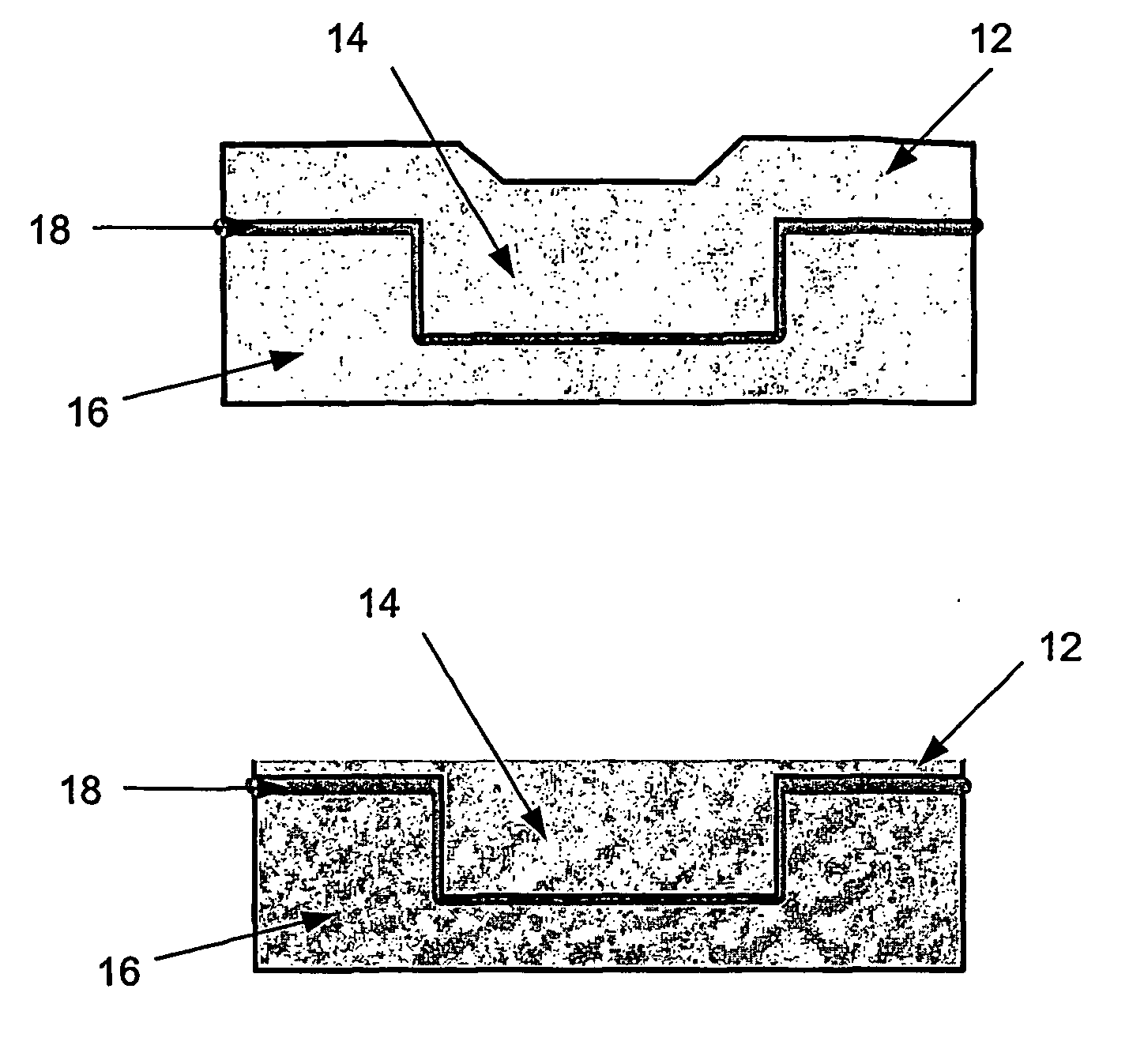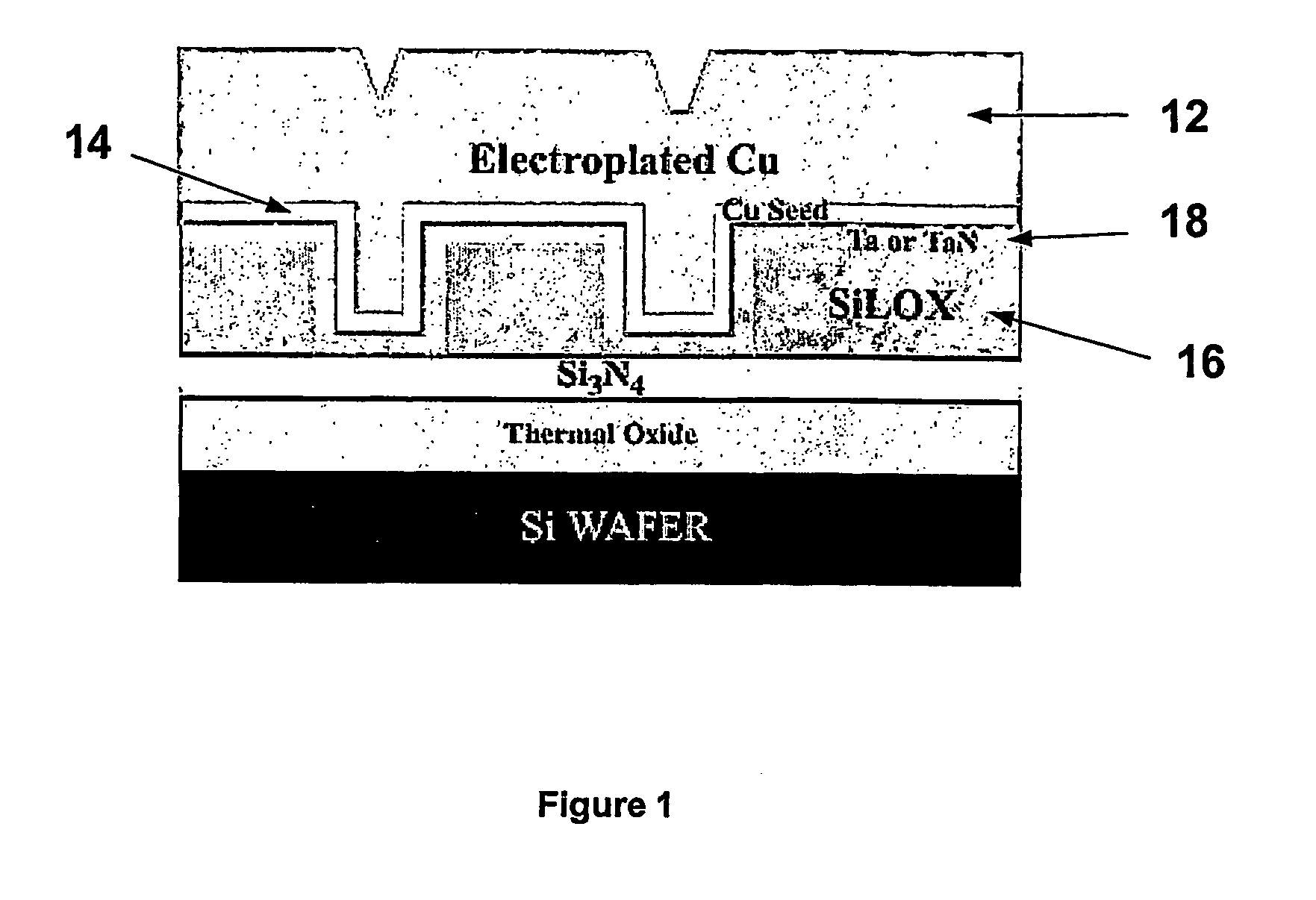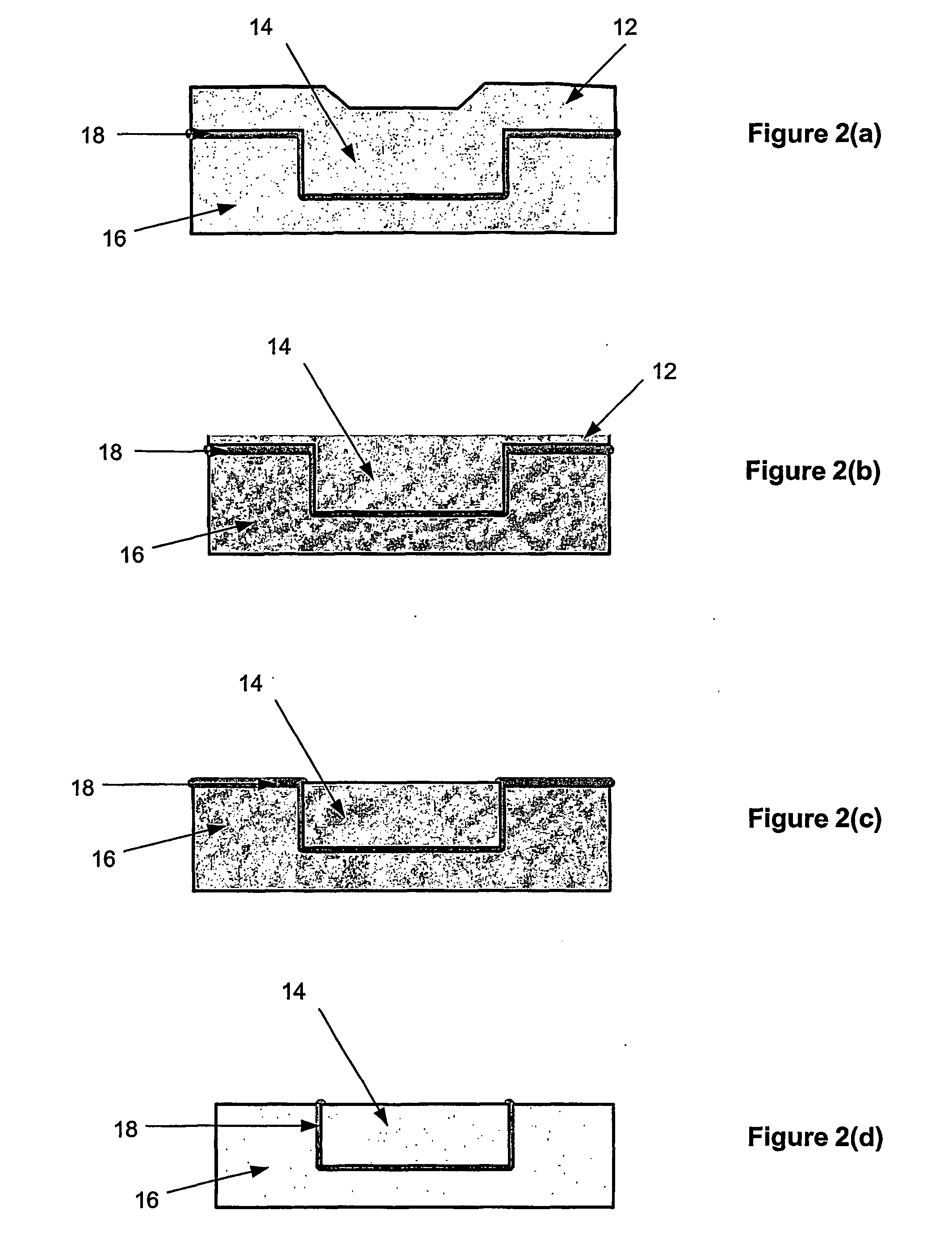Chemical mechanical polishing compositions for step-ll copper line and other associated materials and method of using same
a technology of chemical mechanical polishing and composition, which is applied in the direction of polishing compositions with abrasives, other chemical processes, chemistry apparatus and processes, etc., can solve the problems of unwanted copper dishing and/or dielectric material erosion, and achieve the effect of reducing the occurrence of copper dishing and dielectric or oxide erosion
- Summary
- Abstract
- Description
- Claims
- Application Information
AI Technical Summary
Benefits of technology
Problems solved by technology
Method used
Image
Examples
example 1
[0081] Bulk copper overburden was removed from an 854 Reticle (854 CMP025) wafer manufactured by Sematech, Inc. using a Step I slurry composition for bulk copper removal. Copper lines were polished using the Step II slurry composition outlined in Row 2 of Table 1 hereinabove. Careful inspection with an optical microscope showed that all liner was removed evenly and uniformly within 30 s. To ensure that the Cu lines were electrically isolated and shorts eliminated, a thin layer of SiO2 (200-300 Å) was removed as well.
[0082]FIG. 4 shows a graph plotting the step height reduction from the dielectric field area into the copper line array pre and post liner polish with the CMP slurry composition outlined in Row 2 of Table 1. In addition to removing the Ta liner the Step II CMP composition also planarized the wafer surface. Dishing and Erosion measures the step height from the field area, unpatterned, open areas of the chip, into the copper line arrays. The step height from pre to post l...
example 2
[0083]FIG. 5 shows a plot of removal rates for a thin film of Ta (liner material) and SiO2 (dielectric material) present on a Si wafer surface as a function of weight percent concentration of boric acid component in a CMP composition. The composition comprising 13 wt. % silica, 10 wt. % hydrogen peroxide, 0.1 wt % BTA, pH 6.0 and varying wt % boric acid. At low boric acid concentrations the material removal rates as shown are fairly low, too low to insure high wafer throughput in IC chip manufacturing. Adding boric acid to the slurry increases both removal rates. However, the Ta removal rate shows a stronger increase with increasing boric acid concentration. At 0.4% wt boric acid the increase in the SiO2 removal rate has saturated, but the Ta removal rate is still further increasing. This shows, that with the current Step 2 formulation, containing boric acid, the polishing process is highly tunable by the boric acid content. Thus depending on the specific needs of a particular integ...
PUM
| Property | Measurement | Unit |
|---|---|---|
| wt. % | aaaaa | aaaaa |
| mean size | aaaaa | aaaaa |
| time | aaaaa | aaaaa |
Abstract
Description
Claims
Application Information
 Login to View More
Login to View More - R&D
- Intellectual Property
- Life Sciences
- Materials
- Tech Scout
- Unparalleled Data Quality
- Higher Quality Content
- 60% Fewer Hallucinations
Browse by: Latest US Patents, China's latest patents, Technical Efficacy Thesaurus, Application Domain, Technology Topic, Popular Technical Reports.
© 2025 PatSnap. All rights reserved.Legal|Privacy policy|Modern Slavery Act Transparency Statement|Sitemap|About US| Contact US: help@patsnap.com



